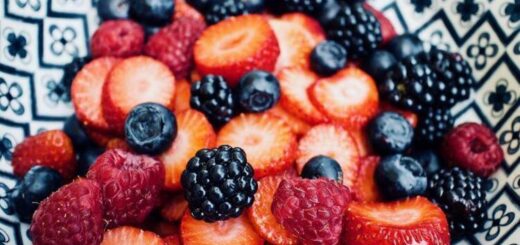Types of Fruits: Seasons, Benefits, Calorie and Sugar Ratios

Fruits, which are indispensable for a healthy food chain, provide many benefits as long as they are consumed consciously. Every day we come across different types of fruits. As a conscious consumer, we need to know what the fruits we eat are good for and what vitamins they contain.
While the importance of a healthy diet is increasingly understood, tropical fruits, wild fruits and exotic fruits are very curious by everyone. We have compiled a lot of information about fruits for you.
Different Types of Fruits and Names List
In addition to many local fruits grown in our country, tropical fruits that we have met recently are also becoming a part of our diet. Both domestic and foreign fruits are good for many health problems. The fruits produced in our country are called local fruits.
Local Fruits
- Strawberry
- Apple
- Pear
- Cherry
- Sour cherry
- Mandarin
- Orange
- Bitter orange
- Kumquat
- Quince
- Kiwi
- Grape
- Plum
- FIG
- Hawthorn
- Date
- Black mulberry
- White Mulberry
- raspberry
- Melon
- Watermelon
- Apricot
- Banana
- Peach
- Mulberry
- Blueberries
- rosehip
Tropical Fruits
Exotic fruits and tropical fruits are also frequently consumed in our country. It is known that those who make fruit detoxes mostly use tropical fruits. Although the outer skins of these fruits are hard, they can be easily consumed thanks to the fruit press.
- Pineapple
- Mango
- Avocado
- Coconut
- Papaya
- pomelo
- Date
- Star Fruit
- Pitaya
- Passionflower
- lychee
What Are the Benefits of Fruits?
Fruits play an auxiliary role in the treatment of many health problems. However, for a healthy life, it must be consumed in between meals.
- Since fruits do not contain cholesterol, they are very beneficial for cardiovascular health.
- It is very rich in water and minerals.
- It helps the nervous and muscular system.
- It is very effective in strengthening the immune system.
- It gives energy.
- Thanks to the fibers in their content, the fat and muscle ratio is balanced.
- It plays a helpful role in maintaining blood sugar balance.
- It helps regenerate organs and tissues.
- Contributes to brain development in children.
- With regular use, memory and intelligence are strengthened.
- It regulates the respiratory and excretory system.
- It helps hair and nail health.
- It reduces nervousness and stress.
- The benefits of fruits for the skin have also been determined by experts.
Which Fruit Contain Which Vitamins?
As we mentioned above, fruits have many benefits. In order to provide these benefits, they take advantage of the vitamins and nutrients they contain. In order to contribute to the elimination of health problems, it is necessary to know which vitamins the fruits contain. All fruits have more or less nutritional value.
Let’s find out together which fruit contains which vitamin.
- Apple: The fruit, which contains plenty of vitamins C and E, is also rich in folic acid, pectin and flavonoids. Apple, which is also rich in pulp, contributes to the regulation of the intestinal system.
- Cherry: The fruit, which is rich in vitamin C, also contains calcium. As it contributes to the development of children, it also helps to protect teeth and bone health in adults.
- Mulberry: The fruit, which is rich in vitamin B and vitamin C, has an edematous and diuretic effect.
- Pear: The fruit containing phosphorus, potassium and calcium is good for cardiovascular diseases. Pear, which helps to maintain blood pressure balance, is also rich in pulp.
- Plum: Among the fruits with vitamin A, perhaps the most loved one is the plum. And when you have salt with it, you can’t get enough of its taste. During periods when you feel tired, you can increase your plum consumption by consulting your doctor. Its resistance-enhancing effect will do you good.
- Cherry: The fruit, which has positive effects on the liver, is rich in vitamin A and potassium.
- Peach: The fruit that facilitates digestion is rich in vitamin C and pulp.
- Blackberry: It can be said that it is perhaps the most popular among wild fruits. Purple fruits are the first fruit that comes to mind, rich in vitamins A, C and E.
- Orange: The fruit that strengthens the immune system, protects the heart and arteries, and is good for anemia, is an antioxidant store thanks to its vitamin C and flavonoid content.
- Tangerine: Rich in vitamin C and vitamin A, the fruit also contains potassium. It strengthens the immune system and creates a shield against diseases.
- Pomegranate: The fruit, which is protective against cancer, is a very powerful antioxidant. It is a storehouse of iron, vitamin C and potassium.
- Strawberry: There are plenty of A, C, E vitamins and folic acid in the fruit, which is good for muscle and joint pain.
Among tropical fruits, fruits with vitamins A, C and E are abundant. The contents of the fruits that have become popular recently are as follows:
- Pineapple: The fruit, which is rich in vitamins A and C, also contains potassium, phosphorus and iron. It has a beneficial effect on skin health, removing edema and increasing vitality.
- Avocado: It is rich in vitamins A, C and E. It has been proven by experts in various experiments that it contributes to skin health. It also plays a helpful role in losing weight with a fruit diet.
- Coconut: It has always intrigued us northerners. Fruit dieters also often use coconut oil. The fruit, which contains vitamins A, E and K, is also rich in sodium, potassium, calcium and iron.
- Mango: It contains plenty of vitamins C, E and D. Vitamin D is not found in large amounts in fruits. For this reason, mango stands in a different place from other fruits. It is the most used fruit among exotic fruits in our country.
Sugar Ratios of Frequently Consumed Fruits
The sugar in fruits is very beneficial for the human body. However, fruit sugar can cause various health problems when used uncontrolled. For this reason, it is beneficial to consume fruit in consultation with your doctor. The sugar content in fruits varies.
- The amount of sugar in one of the fruits that we consume frequently in our daily lives is 4.7 grams.
- A slice of watermelon contains 5.2 grams of sugar. For this reason, it is recommended for dieters and diabetics to consume under the supervision of a doctor.
- One grapefruit contains 5.9 grams of sugar. Isn’t it surprising to you that there is so much sugar in such a sour fruit?
- There is 6.7 grams of sugar in one slice of melon, which we love to consume in summer and winter.
- Peach, the crown jewel of summer, is not as innocent as it seems. It contains exactly 7.1 grams of sugar.
- There is exactly 8 grams of sugar in the orange, which we cannot finish counting the benefits.
- Experts have determined that apricots and plums contain approximately 8.4 grams of sugar.
- Indispensable for diets, apples contain 8.8 grams of sugar.
- 8.4 in blueberries,
- There are 9 grams of sugar in tangerines.
- Kiwi and banana, which came to our country as foreign fruits and later started to be grown in Turkey, are very rich in terms of sugar content. Kiwi contains 9.2 grams of sugar, while bananas contain 10.4 grams.
- Pineapple, the first thing that comes to mind when it comes to tropical fruit, contains 8.4 grams of sugar.
- Avocado, which comes to mind first when it comes to sugar-free fruits, contains 0.7 grams of sugar.
- Coconut, which we consume with pleasure in every form, has 6 grams of sugar.
How Many Calories in Fruits?
Fruits, which are frequently consumed in snacks, have certain calorie amounts, as in every food. Fruits and their calories are very important for weight control by calculating calories.
- The calorie amount of the frequently consumed apple is 44.
- Strawberry used in many desserts is 27 calories.
- The calorie amount of banana, which should be consumed in a controlled manner by dieters and diabetics, is 76.
- The calorie amount of cherry, the indispensable fruit of the summer months, was calculated as 57.
- Pomegranate consumed with pleasure by eating spoonfuls is 70 calories.
- Since grapes and berry-like fruits contain a lot of sugar, they should not be used in weight control without the help of specialist physicians. The calorie amount of one grape is 57.
- Kiwi, which is a vitamin C store, takes its place on the table with 56 calories.
- The health tank of winter months is orange 46,
- Tangerines are 53.6 calories.
- It has been determined that there are 50 calories in 100 grams of pineapple.
- There are 160.1 calories in 100 grams of avocado, which has been consumed by dieters recently. There are 360 calories in 100 grams of coconut.
Which Fruits Are Weakening?
- We should immediately point out that no fruit has a weakening effect on its own. Fruits play a helpful role in weight control.
- By consuming fruit during the slimming process, it becomes easier to control your blood sugar. Thus, sudden sweet crises are prevented.
- Whatever results the fruit diet gives, the body needs all nutrients in certain amounts.
- At this point, thanks to the benefits of fruits, you can contribute to your slimming process by keeping the body fit.
- You can suppress your feeling of hunger and prevent constipation problem by consuming prunes during your slimming process.
- Thanks to the vitamin C in it, strawberry, which accelerates cell regeneration and fat burning, will contribute to the slimming process.
- With the suppression of heat, edema formation begins.
- Green plum, on the other hand, helps you lose weight with its anti-edema content.
- The weakening effect of mango, which is imported to our country, in regular use has been approved by experts. Thanks to its fibrous content, apricot spends a lot of energy on the stomach and intestines during digestion.
- Thus, it indirectly contributes to weight loss.
- Recently, cherry stem has been included in the diet lists due to its anti-edema effect.
- However, the fruit itself has fat-burning properties.
In Which Season Are Fruits Collected?
The time period in which each fruit grows differs. For this reason, the collection times are also different. We can divide the harvesting time of the fruits we consume mainly into spring, summer, autumn and winter periods:
- Spring: From the spring months, plums begin to take their place on our tables. In May, cherries and strawberries also take their place on the counters.
- Summer: Summer period is very rich in terms of fruit variety. Cherries and strawberries continue to be collected in June. In addition to these, sour cherries and apricots also begin to be collected. In July, pear, mulberry, peach and fig take their place on your tables with all their flavors. August is the harvest season for melons and watermelons.
- Autumn: In September, the beginning of the autumn season, vintages begin and delicious grapes decorate the stalls. October, on the other hand, is the harvest season of the persimmon, where there are people who do not like as much as those who love it. In the same month, pomegranate, tangerine and quince also begin to be collected. November is remembered as the month when both autumn and winter fruits can be harvested.
- Winter: Fruits collected in winter are very rich in vitamin C. The picking season of the orange, which is flavored in December and January, is also in the same months. Tangerines, which started to be collected from October, can be collected until February.
When Should Fruits Be Eaten?
- Fruits, which are the crown of diets, should also take their place in the daily nutrition routine. Fruits and their calorie values must be controlled and included in the diet.
- According to expert dietitians and doctors, fruit consumption should vary from person to person. The amount of consumption is determined by measuring blood values.
- For this reason, it is recommended to consume fruit under the supervision of a doctor at regular intervals.
- Fruits should generally be eaten two hours before the main meals.
- It has been determined that fruits consumed immediately after the main meals tire the liver.
- Each fruit contains a certain amount of acid.
- Acidic fruits, on the other hand, should be consumed limitedly for those who suffer from stomach discomfort. The benefits of fruits vary from person to person.
- While a fruit is beneficial for you, it may fall into the category of harmful fruits due to someone else’s health problems.
How to Dry Fruits?
- We talked about the importance of eating fruits in season.
- However, it is possible to dry the fruits and consume them in a healthy way during the winter months.
- The fruits can be dried in the sun or in the oven.
- The fruits must be fresh.
- The fruits to be dried should be separated from the stem and core parts. It is recommended to soak in lemon water for 30-60 seconds.
- During the sun drying process, the fruit should be exposed to direct sunlight. The place to be dried must have a dry ground.
- Care should be taken to arrange the fruits one by one.
- During the drying process, the fruits must be rotated.
- In the oven drying process, the temperature adjustment should be done well.
- It is useful to constantly check it.
How to Store Fruits in the Refrigerator?
- The question of how to store fruits in the refrigerator has been discussed a lot lately.
- It is possible to store fruits without losing their nutritional values.
- The first thing to do is to decide whether to put the fruits in the freezer or in the vegetable section.
- The freshness of the fruits you decide to put in the freezer is very important.
- You should always take care to choose the freshest fruit.
- You should wash it very well and dry it thoroughly. During the packaging process, you can vacuum the air inside the bag by inhaling it.
- You should not wash the fruits you will store in the vegetable section of the refrigerator.
- This is also the answer to the question of why the fruits become moldy.
- You should be careful to arrange the fruits one by one so that they do not get crushed.
- Fruits in the bag will deteriorate faster as they will sweat. For this reason, you should take it out of the bag and store it.
In which months should fruits be given to babies?
Seasonal fruits are recommended to strengthen the immune system of babies starting from the transition period to supplementary food. However, some fruits can cause an allergic reaction in babies. For this, you need to know which fruit should be given in which period. Fruits with high acidity should be given to babies at certain times. In order to avoid rash and gas problems, we can express the distribution of fruits by months as follows.
- 6th and 7th Months: Apricot, avocado, apple, mango, peach, banana, pear, sun dried, purple plum should be given in puree form.
- 8th Month: Grape, cherry, plum, watermelon, melon, orange, cherry, tangerine can be given in puree and finely granulated pieces.
- Month 9: Persimmon and quince can be served in puree. It is recommended to boil the quince.
- Month 10: Cranberry can be given in puree or grated form.
- 12. Month: Fig, pomegranate, pineapple, strawberry, kiwi, blackberry, grapefruit, raspberry fruits are given both in puree and in small pieces. These fruits can also be added to meals and purees.
- Month 24: Mulberry varieties are recommended.











